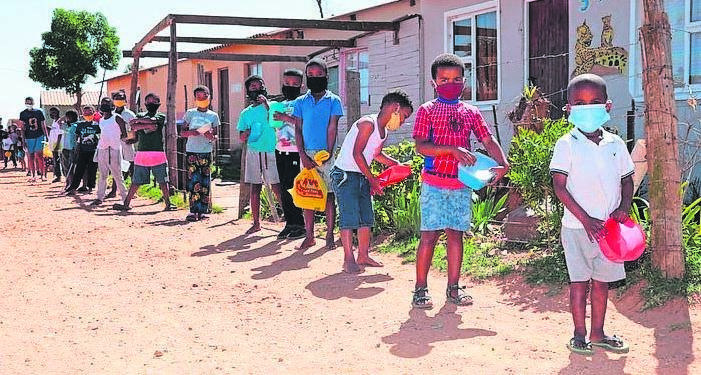
- The University of Cape Town released its South African Child Gauge 2020 report on child nutrition on Thursday.
- The report shows that the level of child stunting in SA is still where it was in 1999.
- Constantly rising food prices are part of the problem.
If government must choose between funding the National Health Insurance (NHI), providing free higher education to those who had enough food at home to finish school, and food security for the majority of South Africans who live below the poverty line, it should choose the latter, CEO of the DG Murray Trust Dr David Harrison has said.
Harrison, who was speaking at the launch of the South African Child Gauge 2020, a report on how Covid-19 disrupted food security and spread child malnutrition in the country, said good nutrition was fundamental for economic growth and development.
Muriel Mafico, deputy representative of UNICEF SA said while this rate was lower than most other sub-Sahara countries, it was is still much higher than international benchmarks.
"The starting point is to prioritise resource allocation. If we have to choose between one more rand into higher education or one more rand into nutrition, we must put it into the latter. If we have to put in one more rand into the NHI or nutrition, we have to put it into the latter," said Harrison.
Harrison said government cannot say that it does not have the resources to invest in early childhood nutrition because breaking the cycle of stunted mothers who in turn give both and raise stunted children was core to economic growth.
Dr Sifiso Ntombela, the chief economist of the National Agricultural Marketing Council in SA, said it should not be a matter of choosing between important priorities like universal healthcare and making sure no child goes to bed hungry because these issues were interlinked. South Africa cannot afford to drop the ball on one or another.
"We have to get the balance right. In matter of fact, over and above getting the balance right, we have to interlink these things," he said.
Food security is still a function of the 'haves and the have nots'
Mafico pointed out that even before the onset of Covid-19, South Africa was experiencing the triple burden of malnutrition, and instead of diminishing, the problems of undernutrition, obesity, and macronutrient deficiencies grew.
"What [Covid-19] has done is to simply magnify and amplify the vulnerabilities which already existed," said Mafico. The Covid-19 pandemic revealed the ugly realities of a stark divide between those who have access to adequate nutrition and affordable diets, and those who did not, she said.
Dr Tracey Naledi, deputy dean of health services at the University of Cape Town's Health Sciences Faculty, said the constantly increasing food prices in SA while household incomes have regressed in real terms, pushed more and more households below the poverty line. Women-headed households in particular had incomes that made it impossible for most of them to afford nutritional foods, unless supplemented by other means.
"This was all before Covid-19 but now the situation is even worst, trapping more women and children in poverty and hunger," said Naledi.
